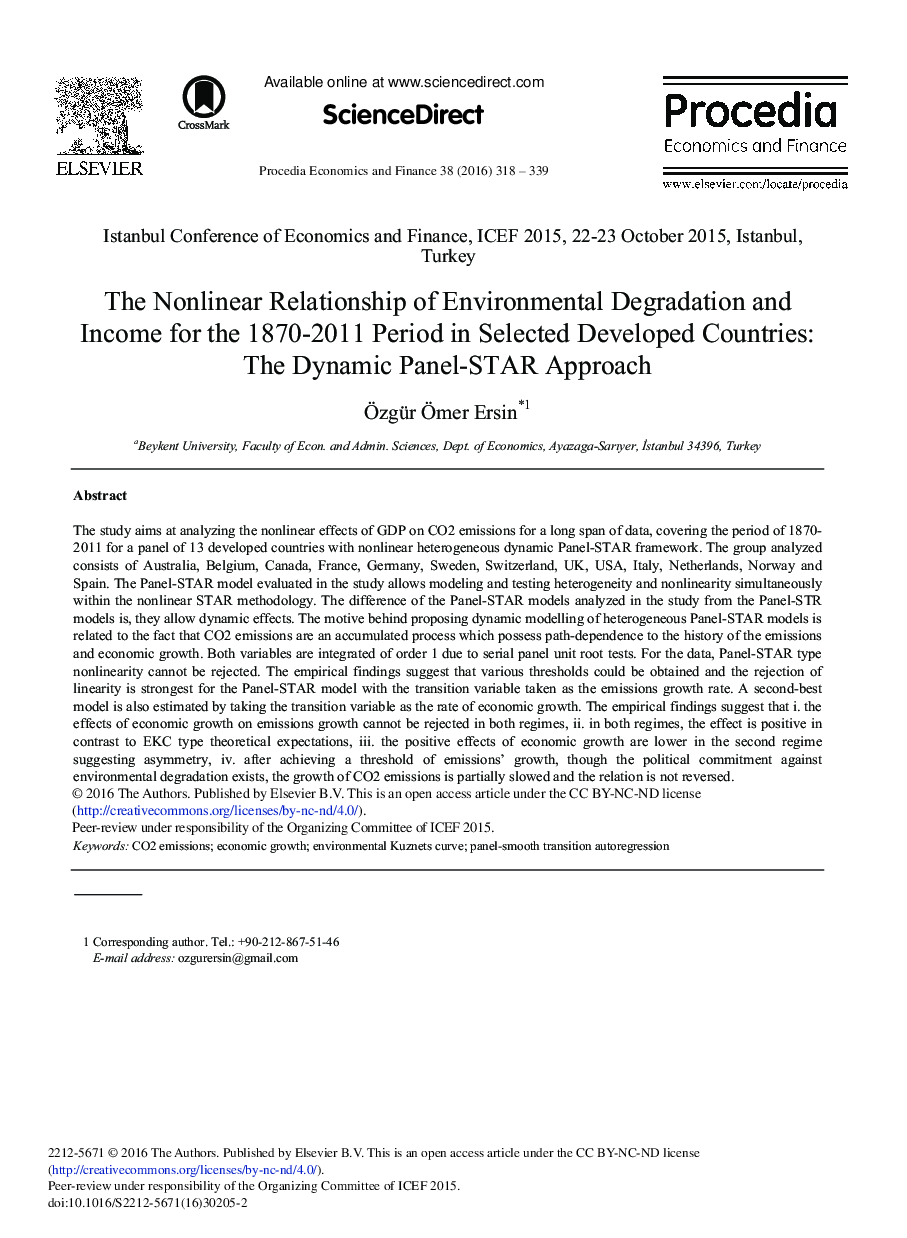| کد مقاله | کد نشریه | سال انتشار | مقاله انگلیسی | نسخه تمام متن |
|---|---|---|---|---|
| 982549 | 1480363 | 2016 | 22 صفحه PDF | دانلود رایگان |
The study aims at analyzing the nonlinear effects of GDP on CO2 emissions for a long span of data, covering the period of 1870-2011 for a panel of 13 developed countries with nonlinear heterogeneous dynamic Panel-STAR framework. The group analyzed consists of Australia, Belgium, Canada, France, Germany, Sweden, Switzerland, UK, USA, Italy, Netherlands, Norway and Spain. The Panel-STAR model evaluated in the study allows modeling and testing heterogeneity and nonlinearity simultaneously within the nonlinear STAR methodology. The difference of the Panel-STAR models analyzed in the study from the Panel-STR models is, they allow dynamic effects. The motive behind proposing dynamic modelling of heterogeneous Panel-STAR models is related to the fact that CO2 emissions are an accumulated process which possess path-dependence to the history of the emissions and economic growth. Both variables are integrated of order 1 due to serial panel unit root tests. For the data, Panel-STAR type nonlinearity cannot be rejected. The empirical findings suggest that various thresholds could be obtained and the rejection of linearity is strongest for the Panel-STAR model with the transition variable taken as the emissions growth rate. A second-best model is also estimated by taking the transition variable as the rate of economic growth. The empirical findings suggest that i. the effects of economic growth on emissions growth cannot be rejected in both regimes, ii. in both regimes, the effect is positive in contrast to EKC type theoretical expectations, iii. the positive effects of economic growth are lower in the second regime suggesting asymmetry, iv. after achieving a threshold of emissions’ growth, though the political commitment against environmental degradation exists, the growth of CO2 emissions is partially slowed and the relation is not reversed.
Journal: Procedia Economics and Finance - Volume 38, 2016, Pages 318–339
